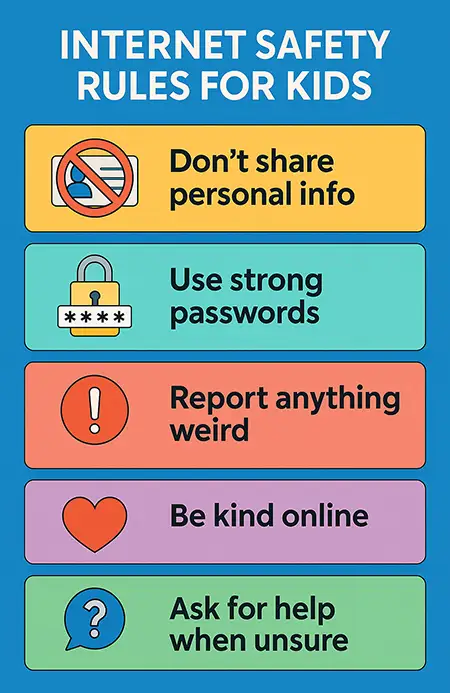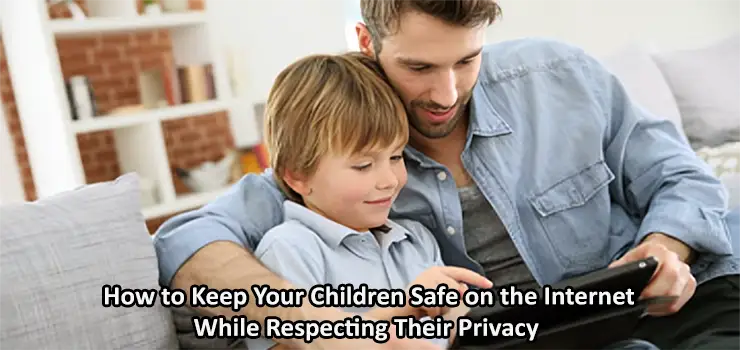The internet has become an integral part of our children’s lives—whether it’s for learning, entertainment, or staying in touch with friends. But with unlimited access comes undeniable risk. As a parent, your top priority is to keep your children safe on the internet, but how can you do that without making them feel like they’re under constant surveillance? Striking the right balance between protection and respecting privacy is both possible and essential.
UCG: Ultimate Cloud Control, Ultimate Protection
Why Is Online Safety Important for Children?
Children face a variety of threats online, including cyberbullying, exposure to inappropriate content, online predators, and data theft. They may unknowingly share sensitive personal information or become targets of scams. Keeping your children safe on the internet isn’t just about installing software—it’s about educating, guiding, and building trust.
Understanding the Privacy Dilemma
Respecting a child’s privacy doesn’t mean turning a blind eye to their online behavior. It means setting clear boundaries, having honest conversations, and offering guidance rather than control. Your goal should be to empower them to make smart choices while you ensure a safety net exists behind the scenes.
1. Start with Open Communication
Start by talking with your child about what they do online. Make it a two-way conversation instead of an interrogation. Ask questions like:
- What websites or apps do you enjoy?
- Has anyone online ever made you feel uncomfortable?
- What would you do if a stranger contacted you?
This approach builds trust. When your child feels heard, they’re more likely to share when something goes wrong—and that’s a key step in keeping children safe on the internet.
2. Set Clear Rules and Expectations
Children thrive with structure, even in the digital space. Establish internet usage rules:
- Set time limits for screen use.
- Define acceptable websites and apps.
- Agree on what can and cannot be shared online.
- Create a no-devices-in-bedrooms policy at night.
Make sure your child understands these rules aren’t punishment—they’re part of keeping children safe on the internet while encouraging responsible behavior.

3. Teach Them About Online Privacy
Children often don’t understand what “private information” really means. Educate them about:
- Not sharing full names, addresses, phone numbers, or school names.
- Avoiding posting real-time location or vacation plans.
- Being cautious about uploading images and videos.
Use relatable examples and explain the risks of oversharing. Remind them that once something is online, it’s almost impossible to erase.
4. Use Parental Controls—But Transparently
Parental control tools are essential, especially for younger children. Use them to:
- Block harmful content
- Set screen time limits
- Monitor search history
- Filter inappropriate websites
However, always be honest about using these tools. Let your child know you trust them but are using safety features because it’s your job to keep them protected. Transparency is crucial to respect their privacy while keeping children safe on the internet.
5. Encourage Strong Password Habits
Many children use the same weak password for everything—or worse, share it with friends. Teach your child:
- How to create strong, unique passwords
- Why they should never share passwords—even with best friends
- How to enable two-factor authentication where possible
This small step greatly contributes to keeping children safe on the internet.
6. Make Cyberbullying a Known Topic
Unfortunately, cyberbullying is a real and common threat. Educate your child about:
- What cyberbullying looks like (mean comments, exclusion, harassment)
- How to block/report users
- Why they should never respond to bullies
- The importance of telling a trusted adult immediately
Creating a safe space for your child to report online abuse is a critical part of keeping children safe on the internet and supporting their mental health.
7. Guide Their Use of Social Media
Social media can expose children to risks they’re not equipped to handle. To stay involved without intruding:
- Help them set up privacy settings
- Discuss who it’s okay to connect with
- Suggest using anonymous usernames for platforms like gaming
- Explain how social media algorithms work and why some content is shown
Again, the goal isn’t spying—it’s guiding. With your help, social media can be fun and safe.
8. Encourage Critical Thinking
Children are naturally curious and trusting—qualities that scammers and online predators exploit. Teach them to:
- Question suspicious messages or links
- Avoid clicking on ads that promise prizes
- Know that “free” apps might come with a hidden cost
- Recognize fake news and misinformation
Critical thinking helps build digital resilience and keeps children safe on the internet, even when you’re not around.
9. Stay Involved Without Hovering
It’s important to stay engaged in your child’s digital life. Ask to see the apps they use, play games with them, or watch videos together. This creates a bond and opens the door for future conversations.
You don’t need to read every message or follow every post—just be a regular, non-judgmental presence. That’s often enough to keep children safe on the internet in a respectful way.
10. Lead by Example
Children model what they see. If you’re glued to your phone at dinner or overshare online, they’re likely to do the same. Show healthy digital habits:
- Take regular breaks from screens
- Ask before posting photos of them
- Avoid using phones in sensitive conversations
When you model respect for privacy and smart internet use, your child is more likely to follow suit.
11. Understand the Technology They Use
Stay up-to-date with the platforms and apps your child is using. This doesn’t mean you need to be an expert—but having a working knowledge of Snapchat, TikTok, Discord, and other apps helps you offer relevant advice and guidance.
There are dozens of parent blogs, YouTube explainers, and tech review sites that break down these platforms in simple terms. Knowledge is power when it comes to keeping children safe on the internet.

12. Gradually Give Them More Freedom
As children grow, they need increasing autonomy. Don’t keep the same strict controls forever. Instead, loosen boundaries gradually while reinforcing your trust in them.
For example:
- Let older children manage their screen time
- Allow them to use private messaging with friends
- Teach them how to handle online conflict themselves
- This helps them transition into responsible, self-aware internet users without feeling oppressed.
Frequently Asked Questions (FAQ)
1. What is the most common online risk for children?
Cyberbullying, exposure to inappropriate content, and online predators are among the most frequent risks.
2. At what age should I let my child use social media?
Most platforms set a minimum age of 13. However, maturity is more important than age—observe your child’s behavior and readiness.
3. Should I check my child’s messages?
For younger kids, occasional checks are okay if done with transparency. For teens, build trust and focus on education rather than surveillance.
4. What apps help keep children safe on the internet?
Some popular parental control apps include Qustodio, Net Nanny, Norton Family, and Google Family Link.
5. How do I know if my child is being cyberbullied?
Watch for mood swings, avoidance of devices, withdrawal from friends, or signs of anxiety and sadness.
6. Should I ban certain websites or apps?
If a platform is unsafe or age-inappropriate, blocking it is reasonable. Just explain why and offer safe alternatives.
7. What’s the best way to talk about internet safety?
Make it part of everyday conversation. Use news stories or personal experiences as starting points.
8. Can too much control backfire?
Yes. Over-monitoring can lead to secrecy and rebellion. Respectful boundaries work better long-term.
9. Is online gaming dangerous for children?
It can be if unmoderated. Use parental controls, set time limits, and discuss in-game behavior and communication.
10. How can I balance privacy and protection effectively?
Trust, educate, and stay involved. Make your child feel safe and respected, not watched.
Final Thoughts: Protection Through Empowerment
Keeping children safe on the internet doesn’t mean invading their digital space—it means being a present, informed, and trustworthy guide. By combining honest communication, smart technology, clear boundaries, and respect for their growing independence, you can protect your child while nurturing their confidence in the online world.
You’re not just guarding them—you’re preparing them to guard themselves.




















